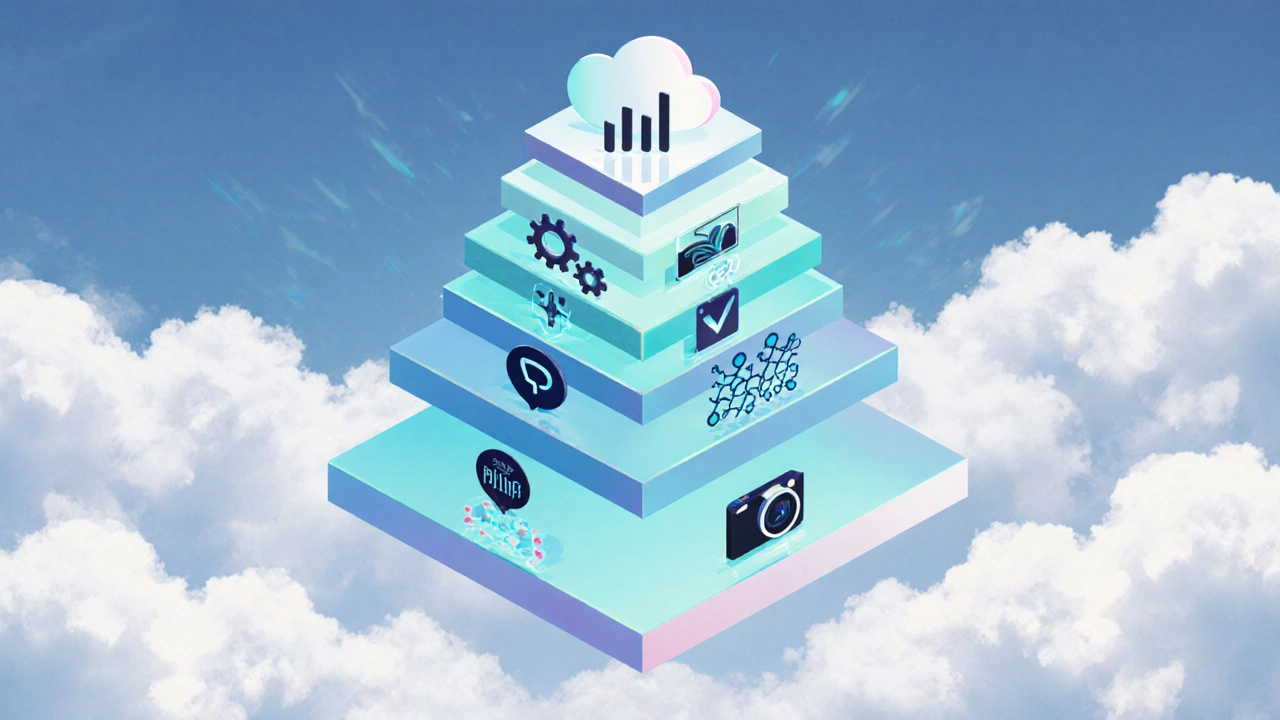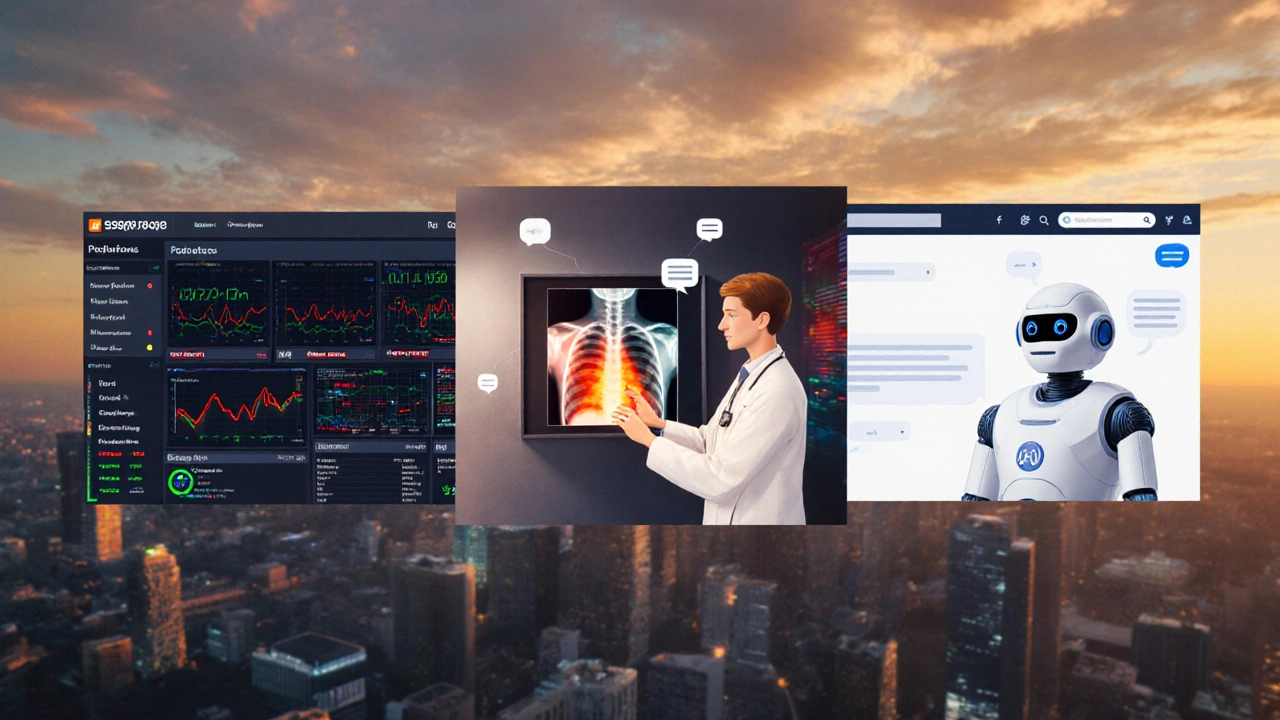AI Career Impact Calculator
Calculate Your AI Career Potential
Discover how AI skills can boost your career trajectory based on industry data from 1,200 tech firms.
Your AI Career Potential
Key Insights
Imagine a world where you can teach a computer to spot a tumor in seconds, translate a conversation in real time, or design a new drug before the morning coffee. That world is already here, and the secret sauce is learning AI. If you’re wondering why this buzz matters to anyone with a laptop or a cloud account, stick around - we’ll break down how AI knowledge is reshaping every corner of the tech industry.
Why AI Learning Is a Game‑Changer
Companies that invest in AI talent are seeing revenue bumps of 20‑30% faster than their peers, according to a 2024 McKinsey survey of 1,200 tech firms. The reason? AI turns data into decisions at lightning speed, and the people who can build, tune, and trust those models become the new strategic advantage.
Beyond the numbers, AI learning fuels three practical shifts:
- Automation of routine code - developers spend less time writing boilerplate and more time solving novel problems.
- Personalized products - recommendation engines, adaptive UIs, and smart assistants become more accurate when the team understands the underlying models.
- New business models - think AI‑as‑a‑service platforms, data‑driven insights marketplaces, and automated content generation services.
All of this hinges on a solid grasp of the core AI technologies, which we’ll unpack next.
Core AI Technologies You Must Master
Before you dive into courses, get a clear picture of the building blocks you’ll be working with. Each block has its own community, tools, and career paths.
Machine Learning is the umbrella term for algorithms that improve from data without being explicitly programmed. It splits into two main families:
- Supervised learning - models learn from labeled examples (e.g., image classification).
- Unsupervised learning - models find hidden patterns without labels (e.g., clustering customers).
Deep Learning pushes the envelope by using multiple layers of artificial neurons. When you hear about “GPT‑4” or “DALL·E”, those are deep‑learning systems.
Neural Networks are the core structure of deep learning. Think of them as a mesh of connected math functions that can approximate almost any pattern if you give them enough data.
Natural Language Processing (NLP) lets machines understand, generate, and translate human language. Voice assistants, chatbots, and sentiment analysis all sit in this space.
Computer Vision focuses on interpreting images and video. From autonomous vehicles spotting pedestrians to factories detecting defects, vision models are everywhere.
Data Science is the art of turning raw data into actionable insight. It blends statistics, domain knowledge, and often a sprinkle of AI to answer business questions.
Cloud Computing provides the scalable hardware you need to train big models without buying a GPU farm. Services like AWS SageMaker, Azure ML, and Google Vertex AI democratize access to powerful compute.
Understanding how these pieces fit together lets you design solutions that scale, adapt, and deliver real value.
Building a Practical AI Learning Roadmap
Jumping straight into research papers can be overwhelming. A step‑by‑step plan keeps momentum high and gaps small.
- Foundations: Brush up on linear algebra, probability, and Python basics. Resources like Khan Academy and the “Python for Everybody” course are free and effective.
- Intro to Machine Learning: Enroll in a beginner‑friendly MOOC (e.g., Coursera’s “Machine Learning” by Andrew Ng). Finish the assignments - they’re the real learning moments.
- Key concepts: regression, classification, overfitting.
- Toolset: Scikit‑learn, Jupyter notebooks.
- Dive into Deep Learning: Follow the “Deep Learning Specialization” on Coursera or fast.ai’s practical lessons. Build a simple image classifier with TensorFlow/Keras.
- Important layers: convolution, pooling, dropout.
- GPU basics: use Google Colab for free acceleration.
- Specialize: Choose a domain - NLP, Computer Vision, or Reinforcement Learning - and follow a focused track. For NLP, Hugging Face’s “Transformers” tutorials are gold.
- Project Portfolio: Turn every learning milestone into a showcase. Deploy a sentiment‑analysis API on Heroku, or a product‑recommendation model on AWS.
- Document the problem, data pipeline, model choice, and results.
- Write a concise blog post and push code to GitHub.
- Stay Current: Subscribe to newsletters like “Import AI”, attend virtual meetups, and read pre‑prints on arXiv weekly.
This roadmap takes roughly 6‑12 months depending on your pace, but each step adds a tangible skill you can market today.

Real‑World Impact: How Companies Are Leveraging AI Talent
Let’s peek behind the curtain of three companies that turned AI learning into measurable growth.
| Company | AI Skill Focus | Result After 12 Months |
|---|---|---|
| FinTech startup Credify | Machine Learning for fraud detection | Reduced false positives by 42 % |
| HealthTech platform MedVision | Computer Vision for X‑ray triage | Diagnosed 30 % more cases early |
| E‑commerce giant ShopSphere | Natural Language Processing for chatbots | Customer‑service tickets down 25 % |
What these stories share is a clear link: teams that invested time in mastering AI fundamentals started shipping AI‑powered features faster than competitors.
Common Pitfalls and Pro Tips
Even with a roadmap, many learners hit roadblocks. Here’s a quick reality check and how to dodge the traps.
- Beware of “shiny‑object syndrome” - jumping from one framework to the next. Stick with one stack (e.g., TensorFlow + Keras) until you’re comfortable.
- Don’t ignore data quality - A model is only as good as the data you feed it. Spend at least 30 % of project time cleaning and labeling.
- Over‑engineering is a waste - Simple linear models often beat deep nets for tabular business data. Start simple, iterate only when necessary.
- Model interpretability matters - Tools like SHAP and LIME help you explain predictions to stakeholders, preventing “black‑box” backlash.
- Keep ethics front‑and‑center - Review bias metrics, ensure privacy compliance, and document your data sources.
Follow these tips and you’ll move from “AI hobbyist” to “AI contributor” much faster.

Resources, Communities, and Next Steps
Learning never stops, but you can accelerate by tapping the right ecosystems.
- Free courses: fast.ai, Coursera audit mode, Google AI Hub.
- Hands‑on labs: Kaggle competitions, Hugging Face Spaces, AWS Free Tier.
- Communities: r/MachineLearning subreddit, AI Discord servers, local meetup groups (e.g., Melbourne AI Club).
- Certification paths for credibility - Google Cloud Professional Machine Learning Engineer, Microsoft Azure AI Engineer Associate.
Pick one resource this week, complete a mini‑project, and add the result to your portfolio. The momentum you build now will pay off as the tech industry leans ever more on AI.
Frequently Asked Questions
Do I need a PhD to work with AI?
Not at all. Most industry roles require solid programming skills, a good grasp of statistics, and hands‑on experience with frameworks like TensorFlow or PyTorch. A portfolio of projects often outweighs formal credentials.
How long does it take to become job‑ready in AI?
For a dedicated learner, 6‑12 months of focused study (combined with a real‑world project) is enough to qualify for junior data‑science or ML‑engineer roles. Continuous learning stays essential.
Which programming language should I start with?
Python dominates the AI ecosystem because of its readability and rich libraries (NumPy, Pandas, Scikit‑learn, TensorFlow). Knowing basic R can help in statistical analysis, but Python is the safe bet.
Is cloud computing mandatory for AI projects?
For small experiments, a laptop with a decent GPU (or free Colab) works fine. Scaling to production‑grade models, however, often requires cloud services for storage, compute, and deployment pipelines.
How do I keep my AI models up‑to‑date?
Set up automated data pipelines that feed fresh data into a retraining schedule. Monitor performance metrics (accuracy, drift) and trigger retraining when thresholds fall.
Ready to start? Pick a free tutorial, roll up your sleeves, and watch how quickly the tech landscape begins to reshape around you.

